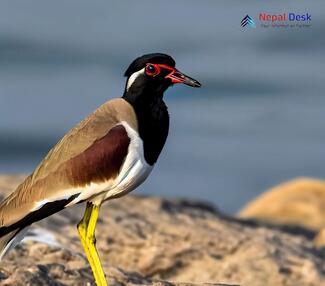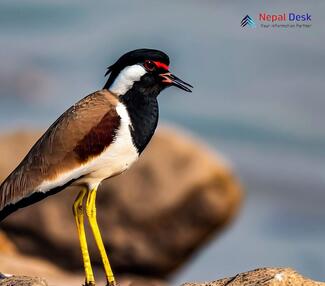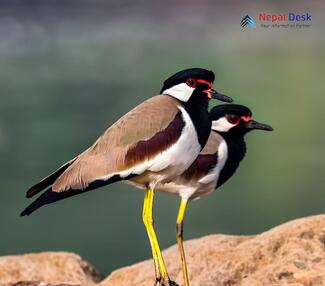The red-wattled lapwing (Vanellus indicus) is a captivating bird species that never fails to capture the attention of bird enthusiasts and nature lovers alike. In this article, we will delve into the world of these fascinating creatures by exploring their taxonomy, physical features, habitat, diet, presence in Nepal, and an interesting point to pique your curiosity.
Taxonomy and Physical Features
Belonging to the family Charadriidae and genus Vanellus, the red-wattled lapwing is a distinct member of the wader group of birds found in Southeast Asia. The scientific name Vanellus indicus reflects its common presence in the Indian subcontinent.
The red-wattled lapwing is identifiable by its striking appearance. This medium-sized wading bird is typically 30-35 cm long and weighs around 110-170 grams. It has a dark brown plumage with contrasting white patches on its shoulders and chest. The most notable feature is the bright red fleshy wattle situated on their forehead just below the eye; hence their name - "red-wattled" lapwing.
Habitat and Diet
In general, red-wattled lapwings prefer wetlands and marshy areas. They are also found near water bodies such as lakes, ponds, and even riversides or rice fields. These adaptable birds can inhabit both open countryside and urban settings like parks or gardens.
Primarily feeding on insects, crustaceans, and mollusks, the red-wattled lapwing uses its sharp beak to probe the ground for prey. Their well-adapted legs allow them to catch insects quickly and stealthily. Occasionally, these birds have been observed consuming small seeds and grass shoots.
Presence in Nepal
Nepal holds a special place in the heart of any bird watcher due to the diverse array of bird species found in this mountainous country. The red-wattled lapwing is no exception, with populations distributed throughout Terai and mid-hills up to an altitude of 1500 meters. They are especially drawn to the wetlands and water bodies within Nepal's protected areas.
Interesting Point:
The red-wattled lapwing is known for its distinctive alarm call, which sounds like "did he do it" or "pity to do it." These calls function as a warning system for the presence of intruders or potential threats. Intriguingly, studies have suggested that their calls can vary based on geographical location.
To sum up, the red-wattled lapwing is a captivating bird species with unique physical features and interesting behaviors worth exploring further. Their presence in the diverse ecosystems of Nepal adds an intriguing dimension to our understanding of these beautiful creatures. Keep an eye (and ear) out for them during your next wildlife adventure!




